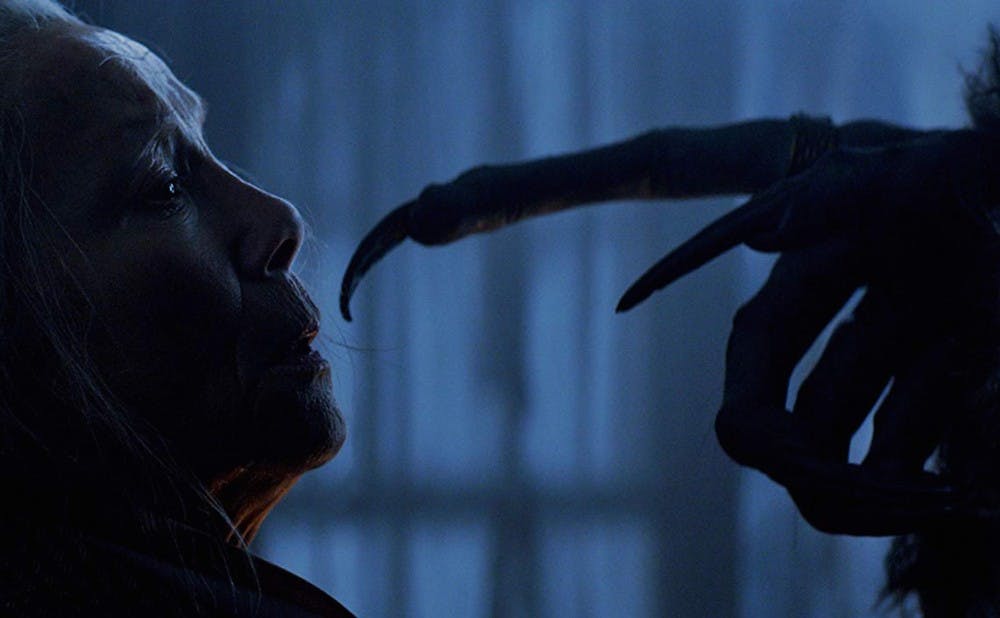For the most part, my family’s taste in Christmas entertainment is laughably generic. We listen to the holiday radio station and soldier through a thousand wincingly pitchy covers of “Jingle Bell Rock” in the hopes of catching Trans-Siberian Orchestra’s rendition of “Carol of the Bells.” Our Christmas Day activities invariably involve an evening viewing of “Love Actually” and “Christmas Vacation,” which we’ve watched enough times to quote entire scenes with chilling accuracy. The only addition we’ve made to these proceedings over the past few years is the wonderfully weird film “Krampus,” a yuletide romp for those who like their Christmas movies more naughty than nice. It’s bizarre, it’s campy and it’s the perfect movie for the holiday season.
Krampus himself has long been a staple of embarrassingly low-budget holiday slashers. The Austro-Bavarian creature is a perfect foil for the holly-jolly mythos of Santa Claus, a nightmarish and nasty demon whose devil horns and penchant for snapping up misbehaving children makes him the ideal villain for Christmas flicks. Most movies fail to do him justice, squandering his potential to truly terrify with cheap special effects and ridiculous backstories, but Michael Dougherty’s 2015 film “Krampus” managed to make the goat-demon threatening again.
On paper, “Krampus” hardly seems better than its cheesy predecessors. The story of a well-to-do family having to suffer through Christmas with their white trash relatives and eventually battling a hoard of vile creatures sounds like a painfully misguided hybrid of “Christmas Vacation” and “Gremlins." However, Dougherty masterfully constructs the film, transitioning easily from family warfare to actual warfare without missing a beat. Dougherty also helmed the Halloween cult classic “Trick r’ Treat,” a deliciously atmospheric anthology that proved he could take the reins on a larger, more commercial production.
Although “Krampus” obviously lifts inspiration from equally icky holiday classic “Gremlins” — even pausing mid-movie for an absurdly depressing tale of holiday trauma à la Phoebe Cates’ Santa Claus story — it dares to go much darker than slapstick violence. Part of the brilliance of “Krampus” as a slasher is the complete absence of safety: The first three victims of the movie are children. The deaths aren’t particularly gory, but the sight of creepy holiday minions carting off screaming kids quickly sets a precedent that nobody is exempt from Krampus’s plan to decimate this family — not even the baby.
Perhaps the film’s greatest strength and what makes it so unforgettable are its practical special effects. The movie’s creatures — some sentient gingerbread men, an impossibly long Jack-in-the-Box with an insect’s mandibles and a demonic angel tree-topper — are for the most part creature effects, lending the action scenes a visceral weight. Watching Toni Collette frantically strangle an actual tree-topper that tries to stretch its wiggling tongue down into her ear, or the Jack-in-the-Box swallow a teenager head-first like some hideous cobra is so much more delightful than the muddled CGI sequences that pass for climaxes in most modern horror movies.
Of course, the star of the film is Krampus himself, here realized as a gigantic, horned beast wearing a chilling mimicry of Saint Nick’s face that is drawn and grey instead of full and ruddy. He is a formidable foe, leaping from rooftop to rooftop and splitting hearths open to capture the families within for his snowglobe collection. For the first time in cinematic history, Krampus is finally portrayed as a threat.
Beyond being just a particularly well-made creature feature, “Krampus” also excels as a genuinely touching Christmas tale. Toni Collette and Adam Scott as the distant, but still affectionate parents anchor the film’s emotional core; even comedic actor David Koechner brings a nice sincerity to his gun-toting redneck role. The theme is a pretty basic plea for audiences to remember the true meaning of Christmas (the opening credits are a hamfisted ode to modern holiday commercialism set to a Bing Crosby carol), but it’s lent credence by the family members’ touching relationships and their struggles to protect one another against Krampus’s attack. There’s a real sweetness at the movie’s core that keeps its more bitter machinery running smoothly.
“Krampus” might seem like an odd choice for a family’s Christmas movie lineup, but it more than earns its place among the classics. It’s more family-friendly than most horror fare, with hardly any gore and a gleeful streak that prompts laughter instead of screams. Those with kids who can handle some intensity and a pretty dour ending will probably delight in such a bittersweet addition to saccharine holiday entertainment. Like a good glass of spiked eggnog, “Krampus” is a holiday indulgence with just enough spice to counteract all that sugar.
Get The Chronicle straight to your inbox
Signup for our weekly newsletter. Cancel at any time.

